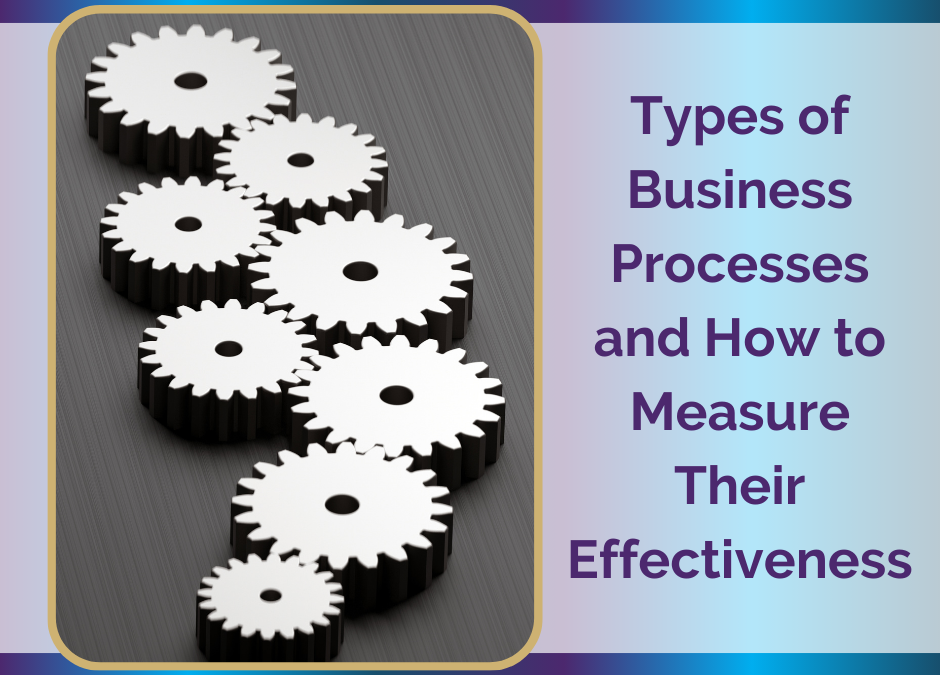Types of Business Processes and How to Measure Their Effectiveness
Business processes are the unsung heroes of every successful operation. They’re not just tasks or routines; they’re the pathways that guide your business from idea to impact. Whether you’re running a solo consultancy or managing a growing team, understanding the types of processes at play and knowing how to measure their effectiveness is key to keeping things humming along.
Let’s break it down.
The Main Types of Business Processes
Think of your business like a well-oiled machine. Each process is a cog that keeps the whole thing moving. While there are countless processes depending on your industry and setup, here are ten core types that show up across most businesses:
- Operational Processes
These are your bread and butter. They cover the day-to-day activities that deliver your product or service; things like inventory management, order fulfilment, and customer support. If these aren’t running smoothly, everything else feels clunky. - Management Processes
This is where strategy meets structure. Planning, organising, and controlling resources all fall under this umbrella. It’s about making sure the business is heading in the right direction and that everyone knows their role in getting there. - Supporting Processes
These are the behind-the-scenes systems that keep the lights on. IT, HR, admin; anything that provides the infrastructure for your business to function. They’re not always glamorous, but they’re essential. - Development Processes
Innovation lives here. Whether you’re refining a service, creating a new product, or improving internal systems, development processes are all about progress. They’re what keep your business evolving rather than stagnating. - Sales and Marketing Processes
This is your growth engine. Sales processes cover lead generation, pitching, and closing deals. Marketing processes focus on brand positioning, advertising, and customer engagement. Together, they help you attract and convert the right people. - Customer Relationship Management (CRM) Processes
Customers aren’t just transactions; they’re relationships. CRM processes help you nurture those connections, from onboarding to ongoing support. Done well, they build loyalty and advocacy. - Supply Chain Processes
If you deal with physical products, this one’s crucial. Procurement, manufacturing, logistics, and distribution all fall under supply chain processes. They ensure your goods get where they need to go when they need to be there. - Financial Processes
Money matters. Budgeting, accounting, financial analysis, and reporting help you manage resources wisely, spot trends, and make informed decisions. These processes give you visibility and control. - Compliance and Regulatory Processes
Every business has rules to follow. These processes ensure you’re meeting legal, industry, and internal standards. They help you avoid risk and maintain ethical conduct. - Quality Assurance Processes
Quality isn’t a nice-to-have, it’s a must. These processes ensure your products or services meet expectations. They reduce errors, boost satisfaction, and keep your reputation intact.
Of course, this list isn’t exhaustive. Any repeatable activity in your business can be considered a process. The key is knowing which ones matter most to your goals and how to measure whether they’re doing their job.
Measuring Process Effectiveness
So, how can you determine if your processes are effectively functioning? It’s not about gut feel; it’s about data. Here’s a simple framework to help you measure and improve:
Identify Your KPIs
Start by choosing the right metrics. What does success look like for each process? It might be time-based (how long something takes), cost-based (how much it costs), quality-based (error rates), or productivity-based (output per hour). Choose KPIs that align with your business goals.
Collect the Data
Use tools that help you track performance. This could be anything from spreadsheets to Business Process Management (BPM) software. The goal is to gather reliable data that reflects how your processes are performing.
Analyse the Data
Look for patterns, trends, and outliers. What’s working well? What’s slowing you down? This step helps you pinpoint bottlenecks and opportunities for improvement.
Make Adjustments
Once you’ve got the insights, take action. That might mean tweaking a workflow, introducing new tools, or offering training to your team. The aim is to make the process smoother, faster, and more effective.
Monitor Continuously
Don’t treat this as a one-off. Keep tracking and reviewing your processes regularly. Continuous improvement is what separates thriving businesses from those that plateau.
Processes aren’t just admin; they’re the architecture of your business. Well-designed and measured processes create flow, reduce friction, and free you up to concentrate on what truly matters. Whether you’re refining your client onboarding, streamlining your content creation, or improving your financial reporting, the same principles apply: know your process, measure its impact, and keep improving.
Because in the end, it’s not just about doing the work; it’s about doing it better.
Connect With Me:
If you are a coach or a consultant and need executive support help to uplevel your business administration and support, reach out and let’s start a discussion about how we may partner in business and get your schedule and background processes humming.
Book a free chat with me, here.

